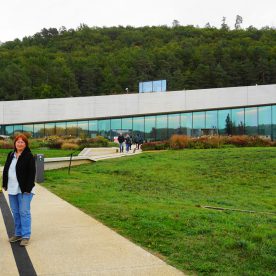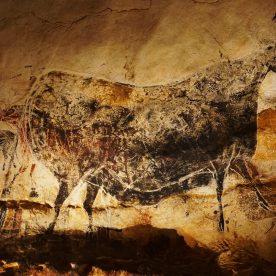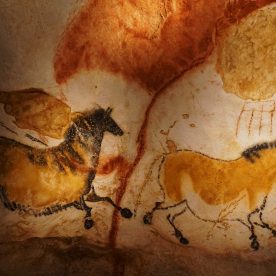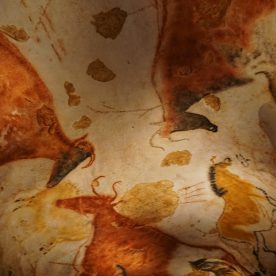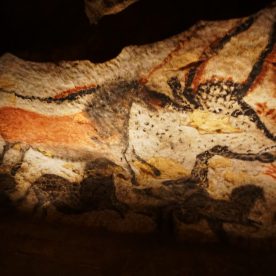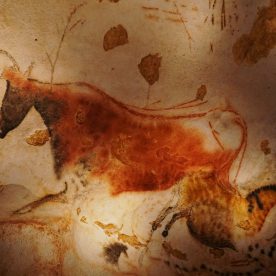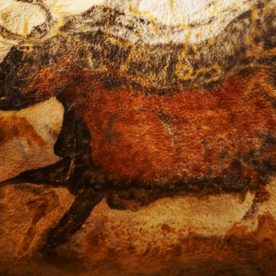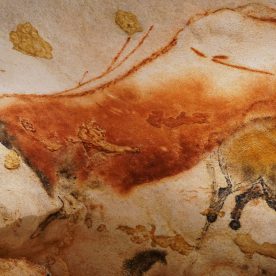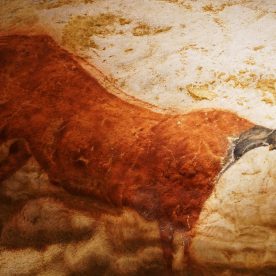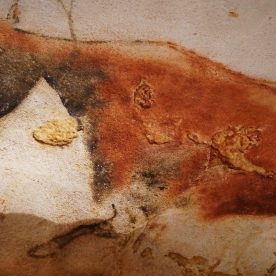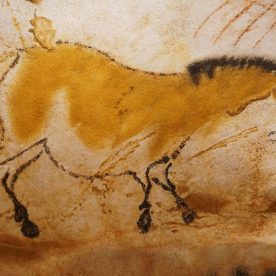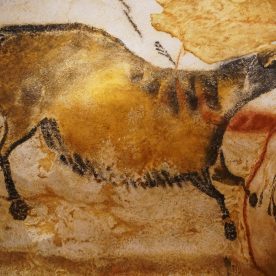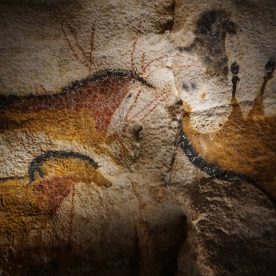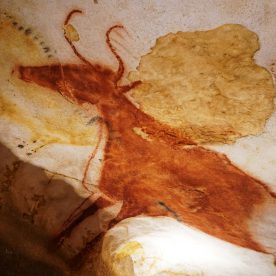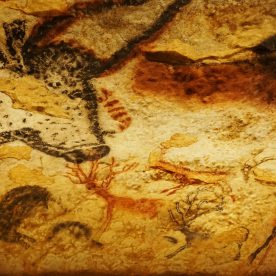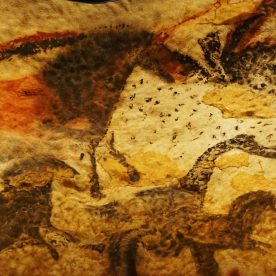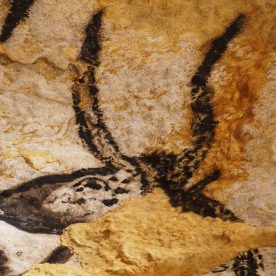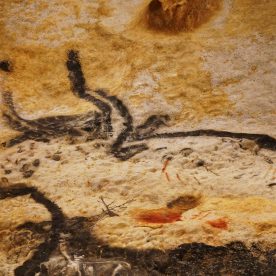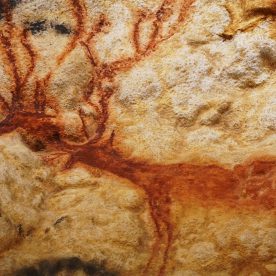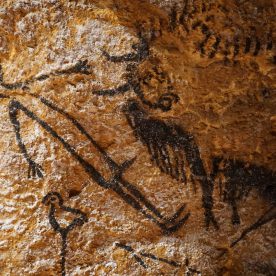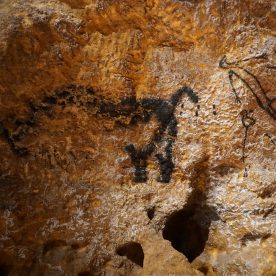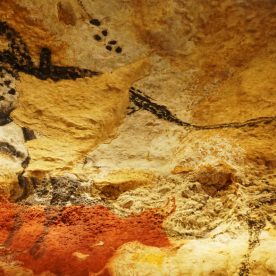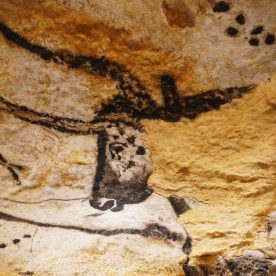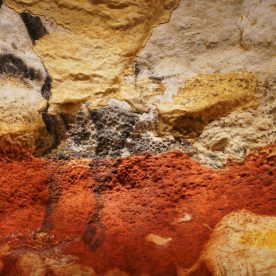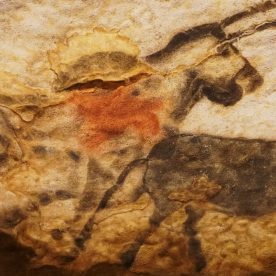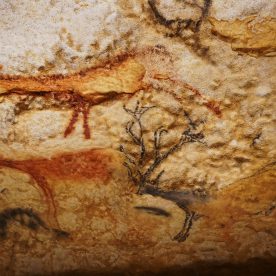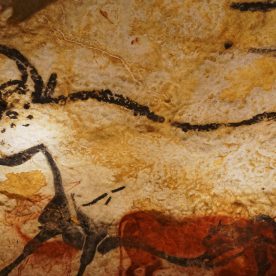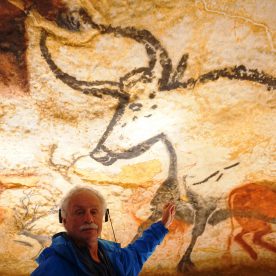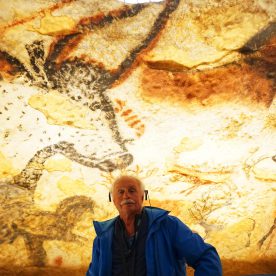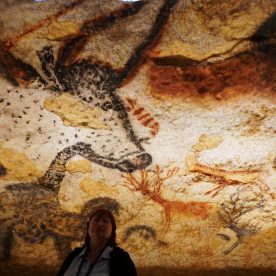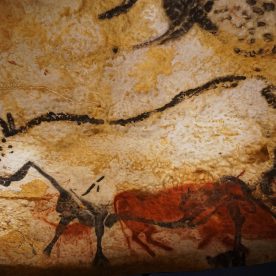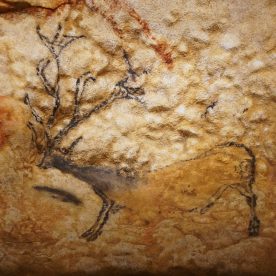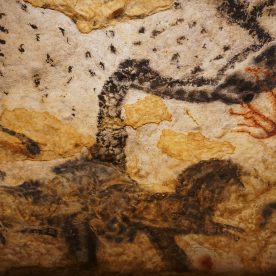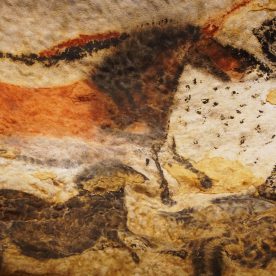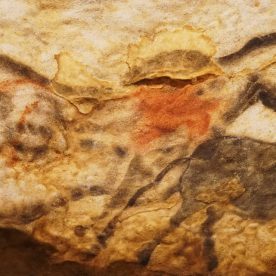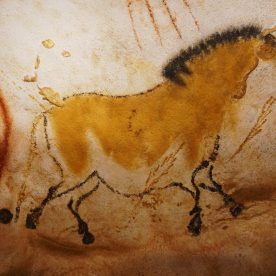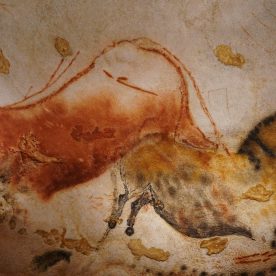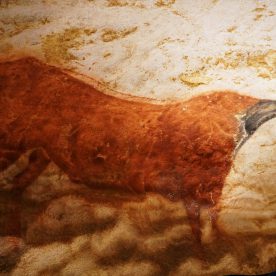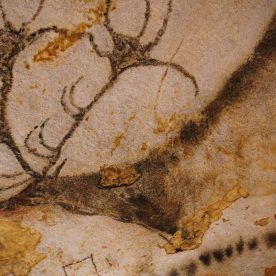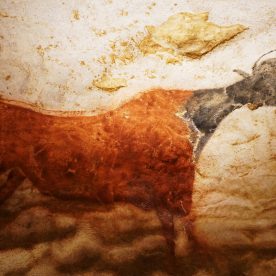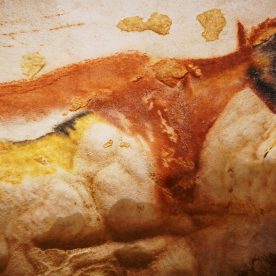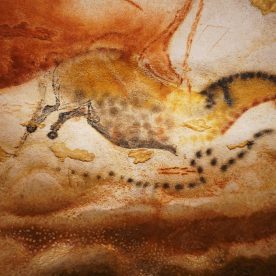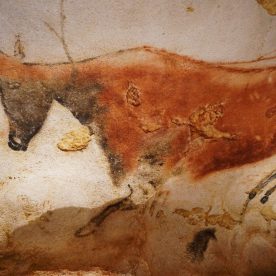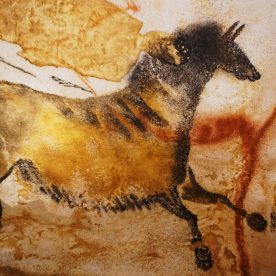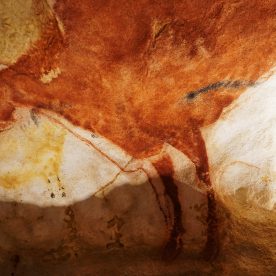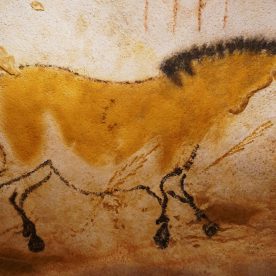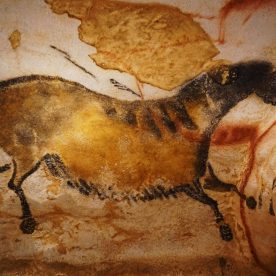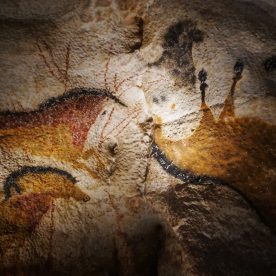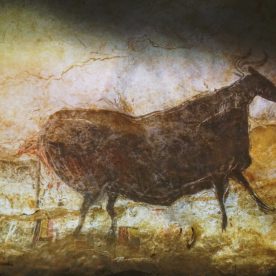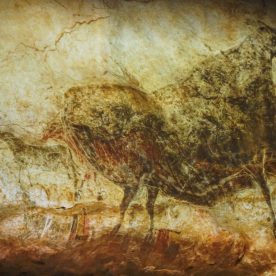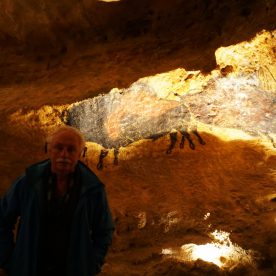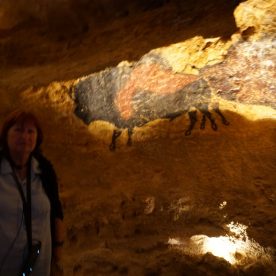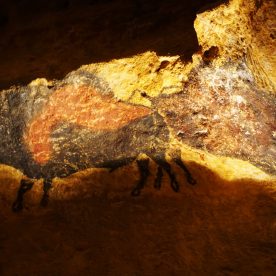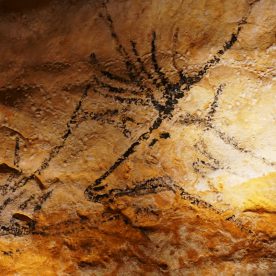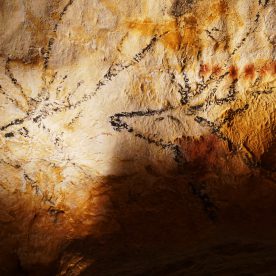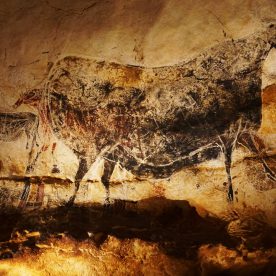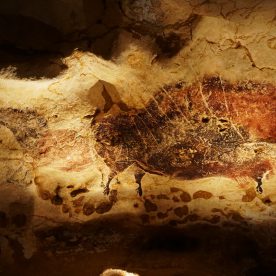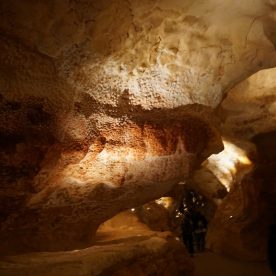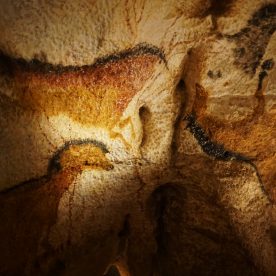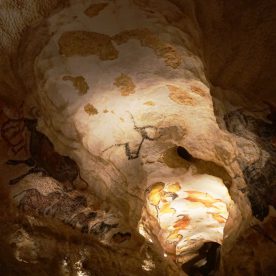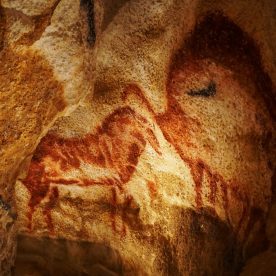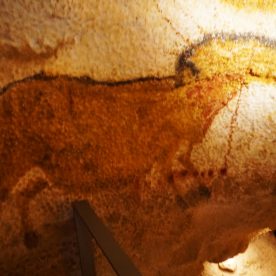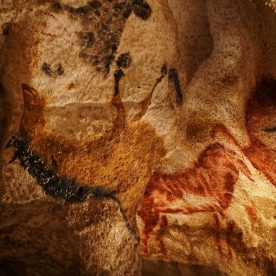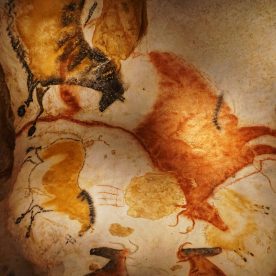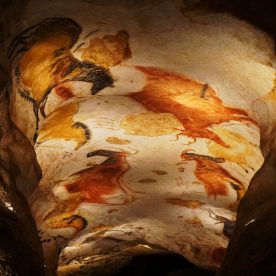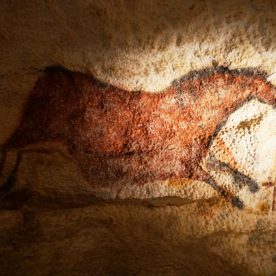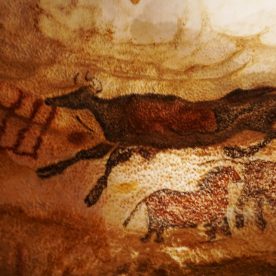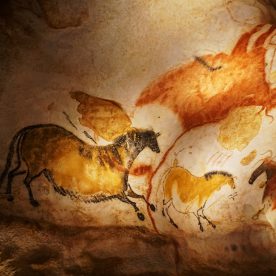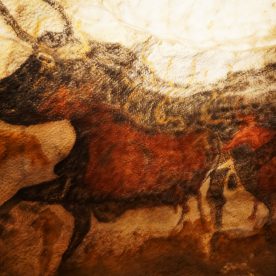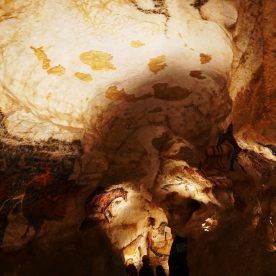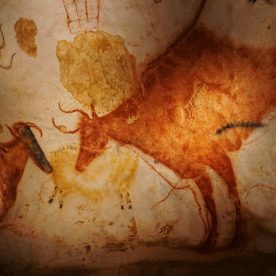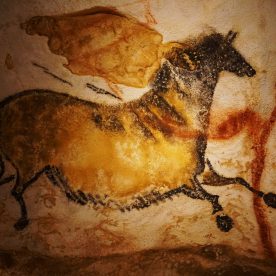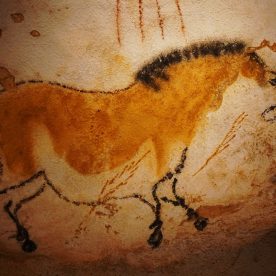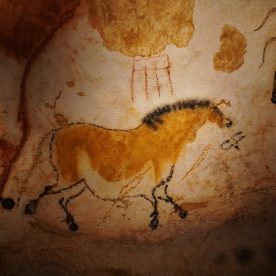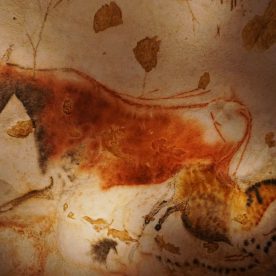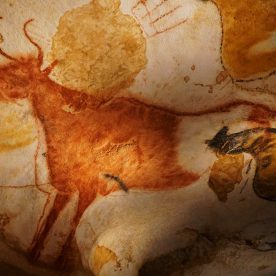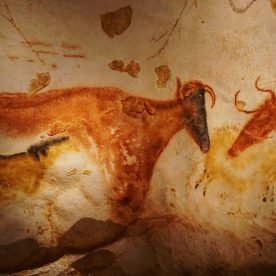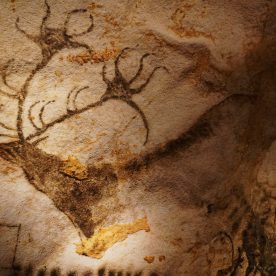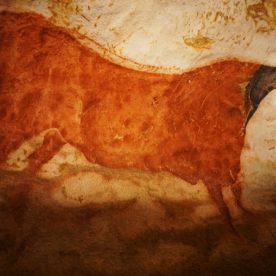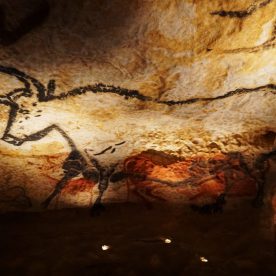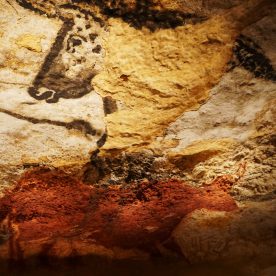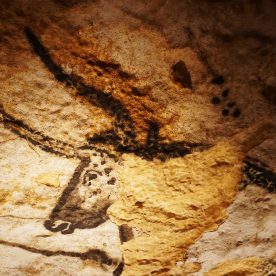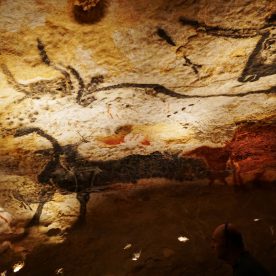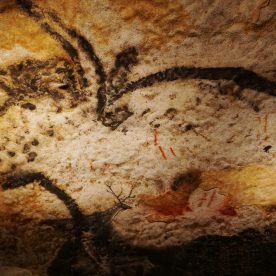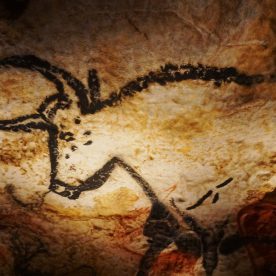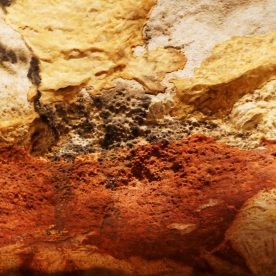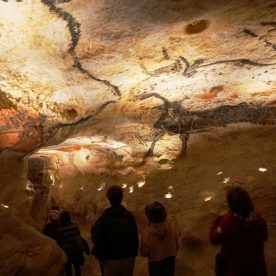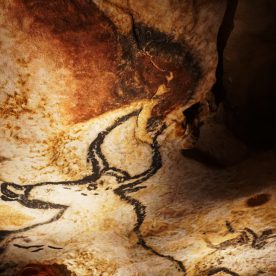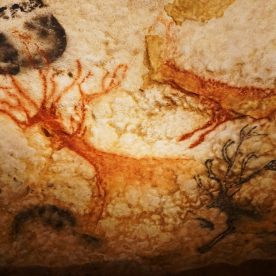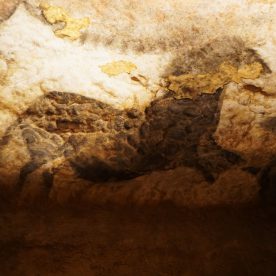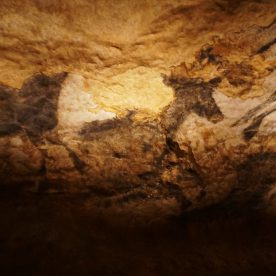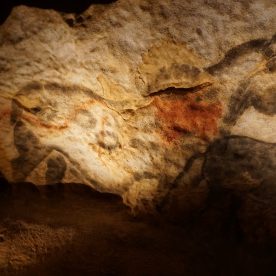These drawings are 19000 years old. The whole thing is just unbelievable. There were several documentaries made, one of them by Werner Herzog – Cave of Forgotten Dreams. Check it out: https://www.documentarymania.com/video/Cave%20of%20Forgotten%20Dreams/
Lascaux Cave is a Palaeolithic cave situated in southwestern France, near the village of Montignac in the Dordogne region, which houses some of the most famous examples of prehistoric cave paintings. Close to 600 paintings – mostly of animals – dot the interior walls of the cave in impressive compositions. Horses are the most numerous, but deer, aurochs, ibex, bison, and even some felines can also be found. Besides these paintings, which represent most of the major images, there are also around 1400 engravings of a similar order. The art, dated to c. 17,000 – c. 15,000 BCE, falls within the Upper Palaeolithic period and was created by the clearly skilled hands of humans living in the area at that time. The region seems to be a hotspot; many beautifully decorated caves have been discovered there. The exact meaning of the paintings at Lascaux or any of the other sites is still subject to discussion, but the prevailing view attaches a ritualistic or even spiritual component to them, hinting at the sophistication of their creators. Lascaux was added to the UNESCO World Heritage Sites list in 1979, along with other prehistoric sites in its proximity.
The discovery
On 12 September 1940 CE four boys examined the fox hole down which their dog had fallen on the hill of Lascaux. After widening the entrance, Marcel Ravidat was the first one to slide all the way to the bottom, his three friends following after him. After constructing a makeshift lamp to light their way, they found a wider variety of animals than expected; in the Axial Gallery they first encountered the depictions on the walls. The following day they returned, better prepared this time, and explored deeper parts of the cave. The boys, in awe of what they had found, told their teacher, after which the process towards excavating the cave was set in motion. By 1948 CE the cave was ready to be opened to the public.
Occupation by humans
Around the time Lascaux cave was decorated (c. 17,000 – c. 15,000 BCE), anatomically modern humans (homo sapiens) had been well at home in Europe for a good while already, since at least 40,000 BCE. Following the archaeological record, they seem to have been abundantly present in the region between southeastern France and the Cantabrian Mountains in the north of Spain, which includes Lascaux. The cave itself shows only temporary occupation, probably linked to activities related to creating the art. However, it is possible that the first couple of metres of the entrance vestibule of the cave – the space the daylight could still reach – might have been inhabited.
THE ART AT LASCAUX WAS BOTH PAINTED ON & ENGRAVED INTO THE UNEVEN WALLS OF THE CAVE, THE ARTISTS WORKING WITH THE EDGES & CURVES OF THE WALLS TO ENHANCE THEIR COMPOSITIONS.
From the finds originating from the cave, we know that the deeper parts of the cave were lit by sandstone lamps that used animal fat as fuel, as well as by fireplaces. Here, the artists worked in what must have been smoky conditions, using minerals as pigments for their images. Reds, yellows, and blacks are the predominant colors. Red was provided by hematite, either raw or as found within red clay and ochre; yellow by iron oxyhydroxides; and black either by charcoal or manganese oxides. The pigments could be prepared by grinding, mixing, or heating, after which they were transferred onto the cave walls. Painting techniques include drawing with fingers or charcoal, applying pigment with ‘brushes’ made of hair or moss, and blowing the pigment on a stencil or directly onto the wall with, for instance, a hollow bone.
